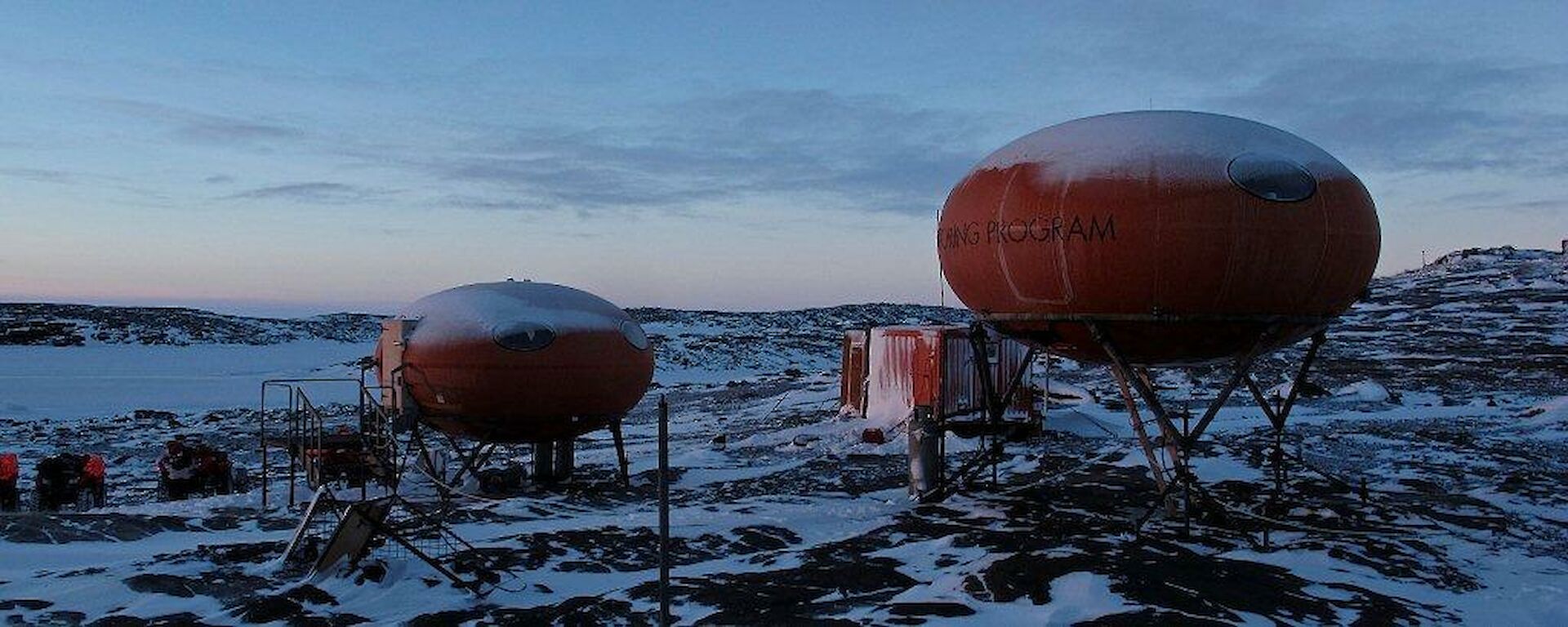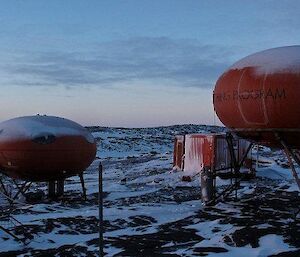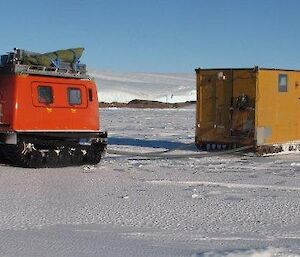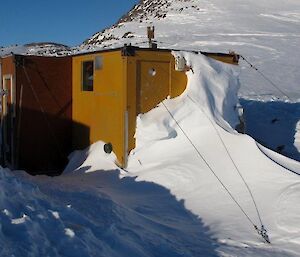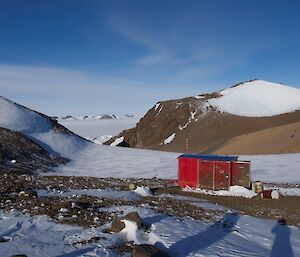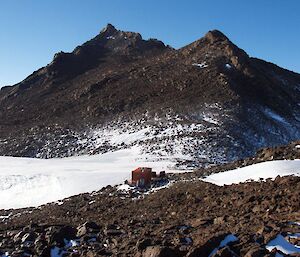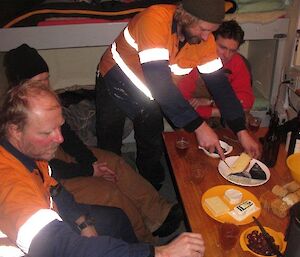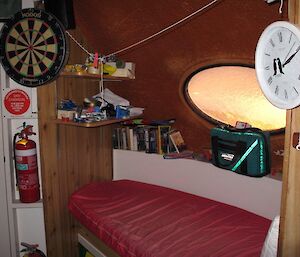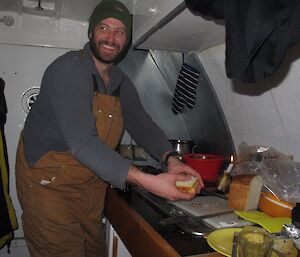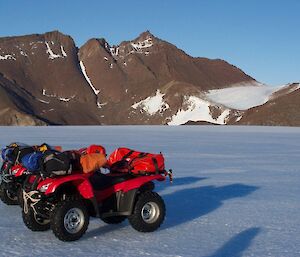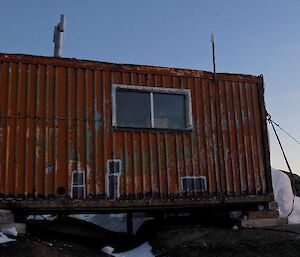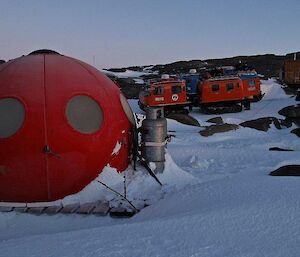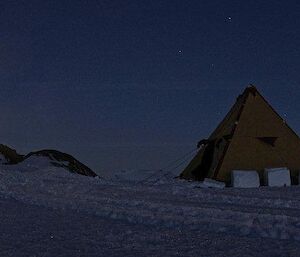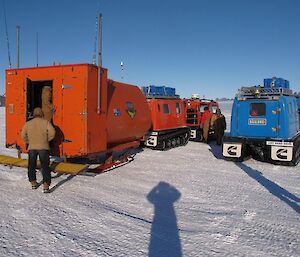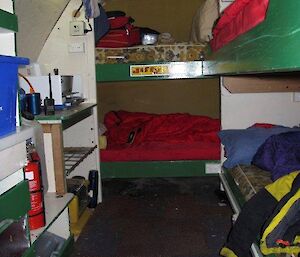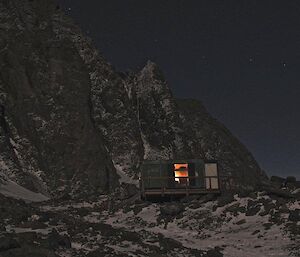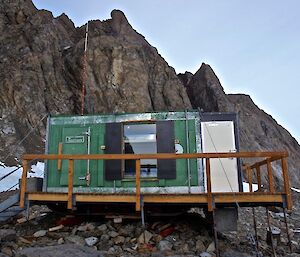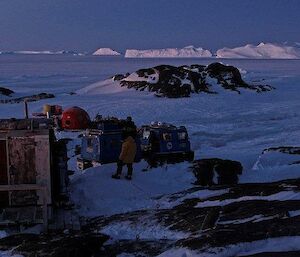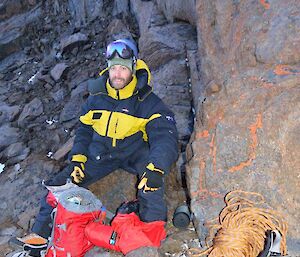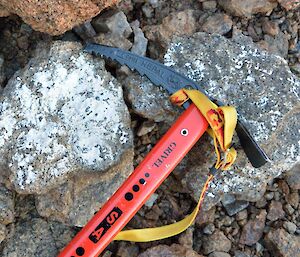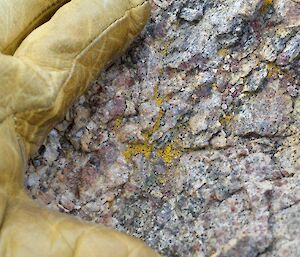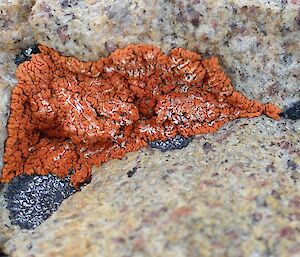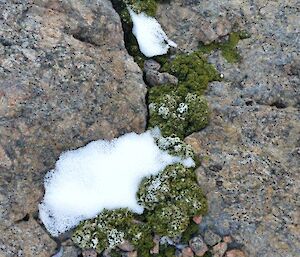I first spotted Antarctic lichen in the Framnes Mountains around 20 km inland from Mawson station and was immediately in awe of its ability to cope with the stress of this isolated, cold and extreme environment. Temperatures are regularly below minus 20 and winds that will take the doors off their hinges are quite common. The wildlife left Mawson station months ago, so apart from the lichens the only obvious signs of life here are the Mawson winterers. I began to wonder: what are lichens and how do they survive here?
Lichens are comprised of algae living amongst the filaments of a fungus in a relationship that is said to be ‘symbiotic’, or mutually beneficial. The algae would be blown away by strong winds without the protective shelter of the fungus, while the fungus derives its ‘food’ from the algae in the form of sugars produced from photosynthesis. Photosynthesis, occurring within the algae, is the process of converting light energy from the sun into chemical energy, or ‘food’, that can be used by the lichen as needed. It may occur in certain Antarctic lichens at temperatures as low as minus 20 degrees Celsius.
Water is also required for photosynthesis and although it almost never rains here, Antarctic lichens can absorb water from ice and snow. They may spend long periods covered by the latter. If they become too dry or cold lichens may become dormant for long periods of time, reactivating when conditions become favourable again. They have been said to survive temperatures as low as minus 75 degrees Celsius for prolonged periods (Lange, 1962).
Given the cold, dark and dry environment it is not surprising that lichens grow very slowly in Antarctica. Depending on the conditions at the location, it may take 100 or even 1000 years to grow just one centimetre. Have a look at the big patch of orange lichen on the rock at Rumdoodle and try to guess how old it is. It certainly must have been there long before any human set foot on the continent!

